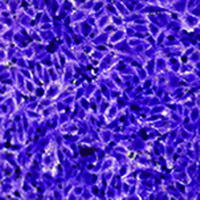Downregulation of Williams syndrome transcription factor (WSTF) suppresses glioblastoma cell growth and invasion by inhibiting PI3K/AKT signal pathway

All claims expressed in this article are solely those of the authors and do not necessarily represent those of their affiliated organizations, or those of the publisher, the editors and the reviewers. Any product that may be evaluated in this article or claim that may be made by its manufacturer is not guaranteed or endorsed by the publisher.
Accepted: 23 October 2021
Authors
Williams syndrome transcription factor (WSTF) participates in diverse cellular processes, including tumor cell proliferation and migration. However, the function of WSTF in glioblastoma (GBM) remains unknown. Data from the Gene Expression Profiling Interactive Analysis (GEPIA) and The Cancer Genome Atlas (TCGA) datasets showed that WSTF was up-regulated in GBM tissues. Moreover, WSTF was also increased in the GBM cells. pcDNA-mediated over-expression of WSTF contributed to cell proliferation and invasion of GBM cells, while GBM cell proliferation and invasion were suppressed by shRNA-mediated silencing of WSTF. Additionally, GBM cell apoptosis was reduced by over-expression of WSTF accompanied by decrease in Bax and cleaved caspase-3, while promoted by silencing of WSTF with increase in Bax and cleaved caspase-3. Protein expression of AKT phosphorylation was enhanced by WSTF over-expression while reduced by WSTF silencing. Inhibitor of phosphatidylinositol 3 kinase attenuated WSTF over-expression-induced increase in GBM cell proliferation and invasion. In conclusion, WSTF contributed to GBM cell growth and invasion through activation of PI3K/AKT pathway.
How to Cite

This work is licensed under a Creative Commons Attribution-NonCommercial 4.0 International License.









